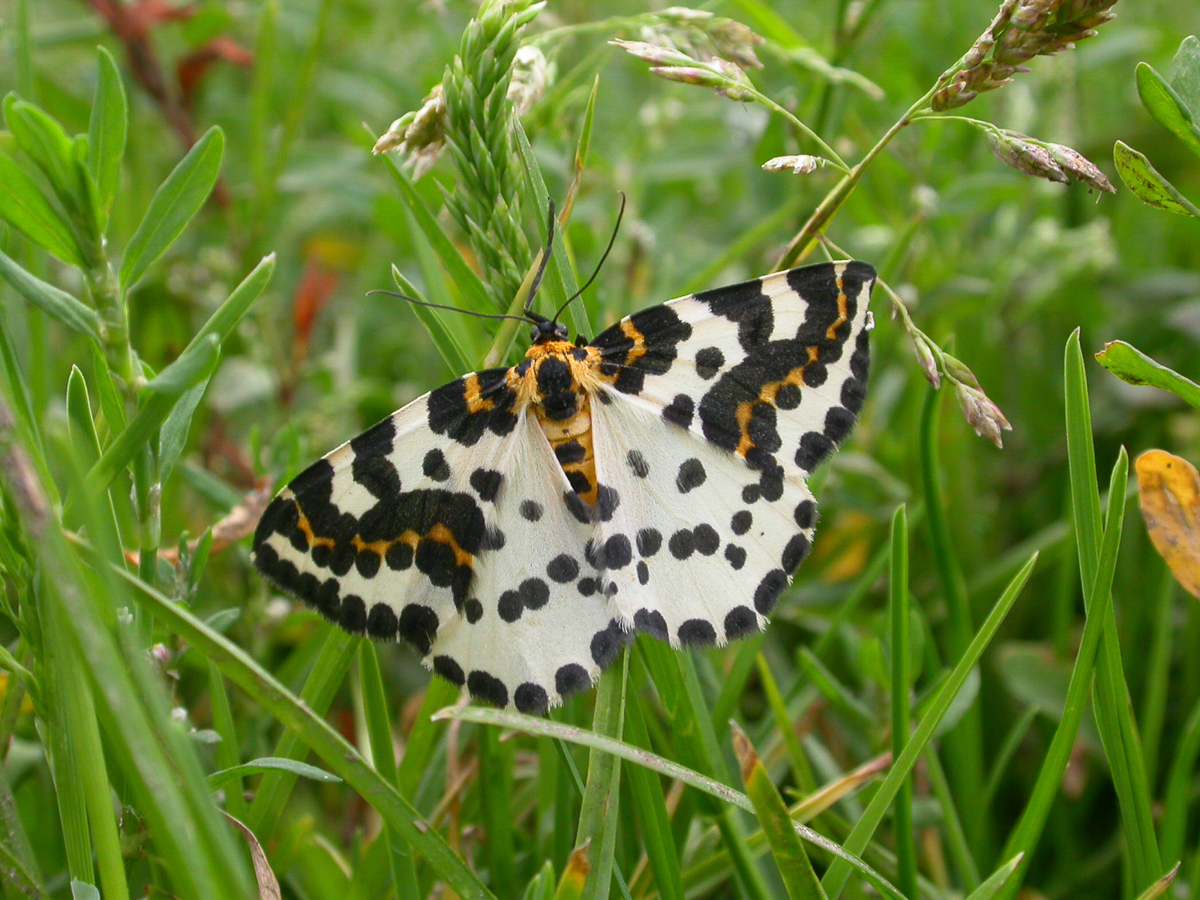
Photo © Andy Mitchell
Abraxas grossulariata is a moth of the family Geometridae, native to the Palearctic realm and North America. Its distinctive speckled coloration has given it a common name of magpie moth. The caterpillar is similarly coloured to the adult, and may be found feeding on the leaves of shrubs such as gooseberry and blackcurrant. The species was first described by Carl Linnaeus in his 1758 10th edition of Systema Naturae.
The length of the forewing is 18-25 mm. The strikingly patterned forewings have a white ground colour, with six transverse series of black stains, partly associated with a pale yellow basal cross band and another through the central area of the forewing. The hindwings are paler, and have a few, small dark stains.
It is a highly variable species with many different forms. Research using Abraxas grossulariata led to the discovery of sex-linked characteristics.
Source: Wikipedia
The primary larval foodplants are Black Currant (Ribes nigrum), Blackthorn (Prunus spinosa), Bramble (Rubus fruticosus), Common Ivy (Hedera helix), Crab Apple (Malus sylvestris), elms (Ulmus spp.), Evergreen Spindle (Euonymus japonicus), Garden Privet (Ligustrum ovalifolium), Gooseberry (Ribes uva-crispa), Hawthorn (Crataegus monogyna), Hazel (Corylus avellana), Heather (Calluna vulgaris), Midland Hawthorn (Crataegus laevigata), Navelwort (Umbilicus rupestris), Orpine (Hylotelephium telephium), Plum (Prunus domestica ssp. domestica), Red Currant (Ribes rubrum), Spindle (Euonymus europaeus), stonecrops (Sedum spp.) and willows (Salix spp.).